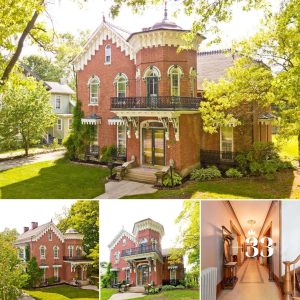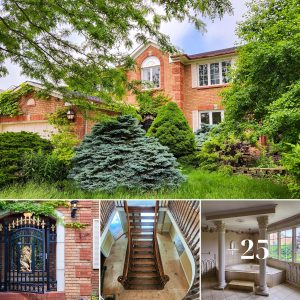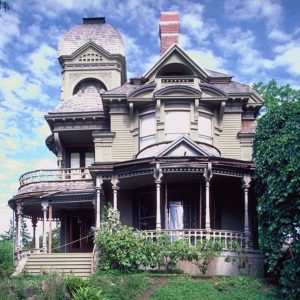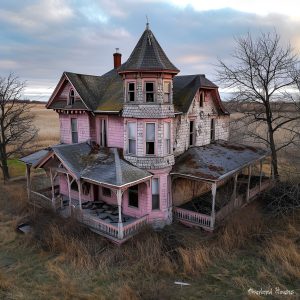
The William A. Clark House, nicknamed “Clark’s Folly”, was a mansion located at 962 Fifth Avenue on the northeast corner of its intersection with East 77th Street on the Upper East Side of Manhattan, New York City. It was demolished in 1927 and replaced with a luxury apartment building which still stands (960 Fifth Avenue). Photos via Museum of the City of New York.
William A. Clark, a wealthy entrepreneur and politician from Montana, commissioned the New York City firm of Lord, Hewlett & Hull to build the house in 1897. The house was completed in 1911, after numerous legal disputes, at a cost of $7 million (equivalent to $192,075,000 in 2019). The house contained 121 rooms, 31 baths, four art galleries, a swimming pool, a concealed garage, and a private underground rail line to bring in coal for heat.
Grand Staircase

It was reported that Clark bought a quarry in New Hampshire, at a cost of $50,000 (equivalent to $1,372,000 in 2019), and built a railroad to get out the stone for the building. He also bought a bronze foundry employing 200 men to manufacture the bronze fittings. In addition, he imported marble from Italy, oak from Sherwood Forest in England, and parts of old French châteaux for the interior.

Exterior of Home
The house had 250 feet on 77th Street and 77 feet on Fifth Avenue, more than any other rich man on Fifth opposite the park, except for Andrew Carnegie. The Fifth Avenue front was large for a New York house, with three bays of granite.

On 77th Street, the house featured a long facade rising to a steep mansard roof. The house featured a spectacular four-sided tower with a three-story-high inward-curving arch topped by an open pergola that was said to have been visible from almost anywhere in Central Park.
Interior
The house rose nine stories, with Turkish baths below ground level, laundry rooms on the top floor and many Greek marble columns. There was a Numidian marble fireplace in the banquet room that measured 15 ft. across, with life-size figures of Diana and Neptune. The 121 rooms were filled with medieval tapestries and artwork. In the breakfast room, there were 170 carved panels, with no two being identical.
Tapestries

On the second floor was a rotunda, 36 feet high, of Maryland marble with eight Bresche violet marble columns, used as the statuary room. The room opened onto a conservatory of solid brass and glass, 30 feet high and 22 feet wide. Across the rotunda was the marble-paneled main picture gallery, which was 95 ft. long and two stories high. An organ loft housed the largest chamber organ in America. The organ had four manuals (keyboards) and pedalboard, 74 ranks and 71 speaking stops.
Organ

Gallery


The Salon Doré, an ornate 18th-century room taken from the Hotel de Clermont in Paris, was installed in the house and served as the receiving room.
Salon Doré



There were 25 guest rooms with their own baths, and 35 servant’s rooms, with men’s quarters (to the east) and female rooms (to the west). There was also a Gothic library that was 90 feet long, featuring a beamed ceiling and an immense carved fireplace.
Library



Clark’s art collection included works by Eugène Delacroix, Jean-François Millet, Jean-Baptiste-Camille Corot, John Constable, François Boucher and Charles-François Daubigny. It was reported that he spent $200,000 (equivalent to $5,488,000 in 2019) for the Gobelin tapestries owned by Prince Murat and $350,000 (equivalent to $9,604,000 in 2019) for those of the Earl of Coventry.
Dining Room

Petit Salon

Gothic Fireplace

Demise
In 1925, upon Clark’s death, his widow and his daughter,Huguette Clark, decamped to 907 Fifth Avenue, where the annual rental for a full-floor apartment was about $30,000. Shortly thereafter, the mansion was sold to Anthony Campagna for $3 million (equivalent to $43,736,000 in 2019). He had the home torn down in 1927, less than 20 years after it was built. It was replaced with the current luxury apartment building at 960 Fifth Avenue.
More interior photos:






Faience Gallery (Tin-glazed pottery)


960 Fifth Avenue Today:


When Built in 1927






